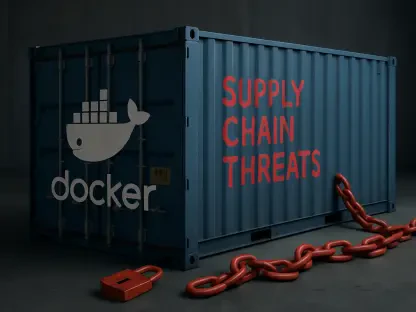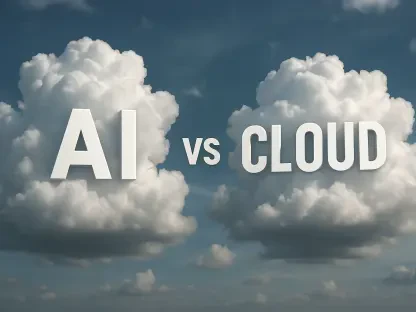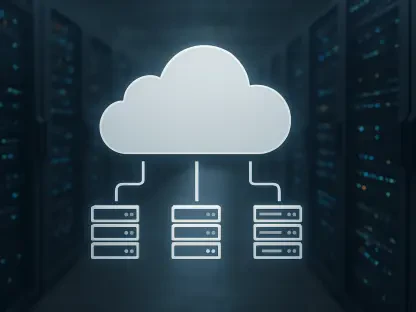The rapid rise of Chromebooks has reshaped the landscape of personal computing, offering an affordable, secure, and portable alternative to traditional laptops and desktops for a wide range of users. These lightweight devices have become a staple in schools, offices, and homes due to their ease of use and low cost, excelling in tasks like web browsing, document creation, and streaming. However, when it comes to resource-intensive creative applications such as 3D modeling and animation, Chromebooks have often fallen short, leaving artists and designers questioning their viability for professional work. The emergence of cloud-based rendering technologies is shifting this narrative, opening up new possibilities for budget-conscious creators. By leveraging remote servers to handle the heavy lifting of rendering, even modest hardware like Chromebooks can potentially support complex 3D workflows. This development raises an intriguing question about whether these accessible devices can truly meet the demands of software like Blender, a leading open-source tool for 3D content creation, when paired with innovative cloud solutions.
1. Unpacking Chromebook Hardware Constraints
Chromebooks are designed with efficiency in mind, making them ideal for everyday tasks such as browsing the internet, editing documents, and consuming media content. Their lightweight operating system, Chrome OS, prioritizes speed and security over raw power, which suits most users looking for a hassle-free experience. However, this design philosophy comes with trade-offs, particularly when tackling demanding workloads like 3D rendering. Most Chromebooks lack the high-end processors, dedicated graphics cards, and substantial RAM required to run resource-heavy applications effectively. This limitation becomes evident when attempting to use software like Blender, which thrives on powerful hardware to manage intricate 3D models and animations.
Traditional 3D production workflows have long relied on local hardware to handle both the creation and rendering phases, necessitating expensive workstations that often cost thousands of dollars. For students, hobbyists, and budget-conscious creators who depend on Chromebooks, this financial barrier has historically made professional-grade 3D work seem out of reach. The gap between Chromebook capabilities and the requirements of advanced creative tools highlights a significant challenge, pushing users to seek alternative solutions that can bridge this divide without breaking the bank. Understanding these constraints is crucial for exploring how emerging technologies might compensate for hardware shortcomings.
2. The Power of Cloud Rendering Solutions
Cloud rendering represents a transformative approach to 3D content creation by decoupling the intensive rendering process from local hardware limitations. Through Blender render farms, artists can upload their projects to remote servers equipped with industrial-grade computing power, allowing these systems to handle the time-consuming rendering tasks. This means that the local device, such as a Chromebook, only needs to manage the initial stages of modeling and scene setup—tasks that are far less demanding and within the reach of many modern Chromebook models. This separation fundamentally changes the accessibility of professional-quality 3D production.
The benefits of cloud rendering extend beyond just offloading heavy workloads. These platforms typically offer user-friendly web interfaces, enabling seamless interaction without the need for complex software installations or high-end local hardware. Additionally, the pay-per-use pricing model ensures that users only incur costs for the actual rendering time, making it a cost-effective option for those with limited budgets. For Chromebook users, this approach opens up access to cutting-edge processing capabilities that would otherwise require significant investment in personal hardware, democratizing the field of 3D creation for a broader audience.
3. Exploring Options for Running Blender on Chromebooks
Several methods are available for Chromebook users to engage with Blender, each offering unique advantages and challenges depending on the device’s specifications. One prominent option is Linux Container Support through Chrome OS’s Linux (Beta) feature, which allows users to install and run native Linux applications like Blender. While this provides full functionality, performance heavily depends on the Chromebook’s hardware, with higher-end models featuring Intel i5 or i7 processors and ample RAM managing modeling tasks better, though local rendering remains slow. Alternatively, experimental web-based versions of Blender, compiled to WebAssembly, enable running the software directly in the Chrome browser, hinting at future potential despite current performance limitations.
Other viable approaches include Remote Desktop Solutions like Chrome Remote Desktop, which lets users control a powerful desktop or cloud virtual machine from their Chromebook, ensuring access to Blender’s full capabilities without sacrificing portability. Additionally, for Chromebooks supporting Android apps, simplified 3D modeling applications serve as an entry point for beginners, though they lack the depth of the full Blender software. Each of these options caters to different user needs and hardware setups, providing flexibility for those determined to pursue 3D creation on budget devices while navigating the inherent constraints of Chromebook performance.
4. Crafting a Hybrid Workflow for Optimal Results
The most effective strategy for serious 3D creation on Chromebooks involves integrating local modeling capabilities with cloud rendering infrastructure. In this hybrid workflow, artists use Blender installed via Linux containers on their Chromebook to create models, set up scenes, and define materials. These tasks, while still demanding, are manageable on many modern Chromebook configurations, especially with careful optimization. Once the creative groundwork is laid, projects are exported and uploaded to a Blender render farm through accessible web interfaces, where powerful servers handle the intensive rendering process and return the finished output for download.
This approach plays to the strengths of both platforms, allowing Chromebooks to focus on creation without the burden of rendering, while cloud services provide the computational muscle needed for high-quality results. Importantly, it preserves the cost-effectiveness that makes Chromebooks appealing in the first place, as users avoid the need for expensive hardware upgrades. By leveraging browser-based tools for submission and retrieval, this workflow ensures a seamless experience, enabling creators to produce professional-grade work without deviating from the budget-friendly ethos of their chosen device. This balance of local and remote resources marks a practical path forward for aspiring 3D artists.
5. Optimizing Performance on Limited Hardware
For Chromebook users working with Blender, optimizing workflows to accommodate hardware limitations is essential for a smooth experience. Scene complexity must be kept in check, with polygon counts and texture resolutions tailored for modeling and preview purposes rather than final output. Artists can employ simplified proxy geometry during the setup phase, swapping in detailed models only when submitting projects to cloud rendering services. Such strategies help maintain interactive performance on devices that lack the raw power of dedicated workstations, ensuring that the creative process remains fluid and frustration-free.
Beyond scene management, viewport performance can be enhanced through specific techniques tailored for low-spec hardware. Disabling real-time shadows and reflections during modeling, using basic material previews instead of complex shaders, and organizing scenes into layers to reduce visible geometry all contribute to a more responsive workspace. These adjustments allow users to focus on design without constant slowdowns, preparing projects that will achieve stunning quality once processed by professional cloud rendering infrastructure. By adopting these practices, Chromebook users can maximize their device’s potential while still aiming for high-end results in their final renders.
6. Enhancing Educational Access and Opportunities
The synergy of free Blender software, affordable Chromebooks, and cost-effective cloud rendering solutions creates a powerful opportunity to lower barriers in 3D education. Students and aspiring artists can now engage with professional-grade tools without the prohibitive costs of high-end hardware, enabling skill development at a fraction of the traditional expense. Schools already equipped with Chromebook deployments can integrate 3D creation into their curricula, offering students hands-on experience with industry-standard software and preparing them for careers in creative fields without additional hardware investments.
This increased accessibility holds particular importance for underserved communities and regions where expensive technology remains out of reach. By separating the learning and creation phases from the need for powerful local rendering hardware, a more diverse range of voices can contribute to industries historically dominated by those with access to premium resources. Cloud rendering ensures that even budget-conscious creators can produce portfolio-worthy work, fostering inclusivity and empowering individuals to pursue their artistic ambitions regardless of financial constraints. This shift represents a significant step toward democratizing creative education on a global scale.
7. Analyzing Costs of Chromebook-Based 3D Workflows
When comparing the economics of Chromebook-based 3D workflows to traditional setups, the financial advantages become strikingly clear. A capable Chromebook typically ranges from $300 to $600, a stark contrast to professional workstations that start at $2,000 to $3,000 for adequate rendering power. For students or hobbyists who only produce occasional projects, the upfront savings on hardware can cover cloud rendering costs for an extended period, making this approach highly economical for those with limited budgets or sporadic creative output.
Even for more active creators, the costs associated with cloud rendering remain manageable and often more cost-effective than local hardware investments. Rendering a short animation through a Blender render farm might cost between $20 and $100, depending on the project’s complexity and desired quality. Producing multiple projects each month still results in annual expenses far below the price of purchasing and maintaining cutting-edge local systems. Moreover, cloud platforms grant access to the latest processors and GPUs, offering performance levels that personal investments could rarely match, further enhancing the value proposition of this budget-friendly workflow.
8. Navigating Challenges and Setting Expectations
Despite the promising advancements, Chromebook users must maintain realistic expectations when engaging in 3D creation due to inherent hardware limitations. Complex scenes with millions of polygons can strain even the modeling phase on these devices, leading to sluggish performance or crashes. Real-time animation previews are particularly challenging without dedicated graphics cards, often resulting in choppy playback that hampers iterative design. These constraints necessitate a thoughtful approach to project planning to avoid overwhelming the system during the creative process.
Additionally, reliance on cloud rendering introduces dependencies on external factors such as internet connectivity. Local test rendering for quick iterations is often impractical on Chromebooks, requiring artists to meticulously optimize scenes before submission to avoid unnecessary costs. For users in areas with limited bandwidth or data caps, uploading large projects with high-resolution textures can become a time-consuming bottleneck, sometimes taking hours. These challenges highlight the importance of strategic workflow adjustments and access to reliable network infrastructure to ensure a seamless experience when leveraging cloud solutions for final output.
9. Looking Ahead to Technological Advancements
The future of Chromebook-based 3D creation appears increasingly promising with the advent of emerging web technologies like WebGPU, a standard poised to significantly enhance browser-based graphics performance. This development could elevate web-based 3D applications to near-native levels of efficiency, reducing the performance gap for tools like Blender when accessed directly through Chrome. Progressive Web Apps (PWAs) also hold potential, offering the possibility of delivering robust Blender-like functionality without the need for traditional software installation, further streamlining workflows on lightweight devices.
Simultaneously, cloud rendering platforms continue to evolve, introducing improved web interfaces, faster upload mechanisms, and more competitive pricing structures. These advancements aim to make the process more accessible and efficient for users with limited hardware capabilities. As Chromebook specifications improve and web standards mature, the convergence of these technologies suggests a future where budget-conscious creators can achieve professional results with minimal friction. This trajectory points to an exciting expansion of practical 3D workflows, ensuring that accessibility remains at the forefront of creative innovation.
10. Step-by-Step Guide to Getting Started
For Chromebook users eager to dive into 3D creation with cloud rendering, a structured approach can ease the initial learning curve and setup process. Start by activating Linux (Beta) support on compatible Chromebooks to enable the installation of native applications. Next, install Blender using Linux terminal commands, ensuring the software is properly configured for use. Completing beginner tutorials is essential to grasp fundamental 3D concepts and become familiar with Blender’s interface and tools. Starting with simple projects helps users understand Chromebook limitations and necessary workflow adjustments before tackling more ambitious endeavors.
Once comfortable with the basics, research Blender render farm services that offer free trials or credits for new users to minimize initial costs. Test the cloud rendering process by submitting a small project, observing the submission, rendering, and output delivery stages to build confidence in the system. Gradually scale up project complexity as familiarity with this hybrid workflow grows, ensuring each step builds on the last for a sustainable learning progression. This methodical approach allows users to leverage both local capabilities and cloud power effectively, paving the way for successful 3D content creation without overwhelming their device or budget.
11. Tapping into Community Support and Resources
The Blender community stands as a vital resource for Chromebook users navigating the unique challenges of 3D creation on budget hardware. Active forums and Discord channels provide dedicated spaces for discussing platform-specific issues, sharing tips, and seeking advice from experienced users. These communities foster collaboration and problem-solving, ensuring that newcomers can find guidance on everything from initial setup to advanced techniques, making the journey less daunting for those new to the software or Chrome OS environment.
Beyond direct community interaction, an abundance of online resources further supports learning and skill development. YouTube tutorials cover critical topics such as installing Linux on Chromebooks, optimizing performance on low-spec hardware, and integrating cloud rendering into workflows. These visual guides offer step-by-step instructions that cater to various learning styles, helping users overcome hurdles and master efficient practices. The wealth of accessible support underscores the importance of community engagement in unlocking the full potential of Chromebook-based 3D creation, ensuring users are never alone in their creative pursuits.
12. Reflecting on Budget-Friendly 3D Innovation
Looking back, the integration of Linux support for Blender and the strategic use of Blender render farms marked a significant turning point for Chromebook users aspiring to create professional 3D content. This combination allowed budget-conscious individuals, including students and hobbyists, to bypass the prohibitive costs of high-end workstations while still achieving impressive results. It proved that raw hardware power was no longer the sole determinant of creative capability, as cloud solutions effectively leveled the playing field for many.
Success in this space hinged on a clear understanding of hardware limitations, meticulous workflow optimization, and the judicious use of cloud services for high-quality final outputs. As web technologies and cloud platforms advanced over time, they further refined these Chromebook-based workflows, making them more seamless and accessible. Moving forward, creators are encouraged to explore these evolving tools, experiment with hybrid approaches, and tap into community resources to push the boundaries of what affordable devices can achieve in the realm of 3D artistry.









